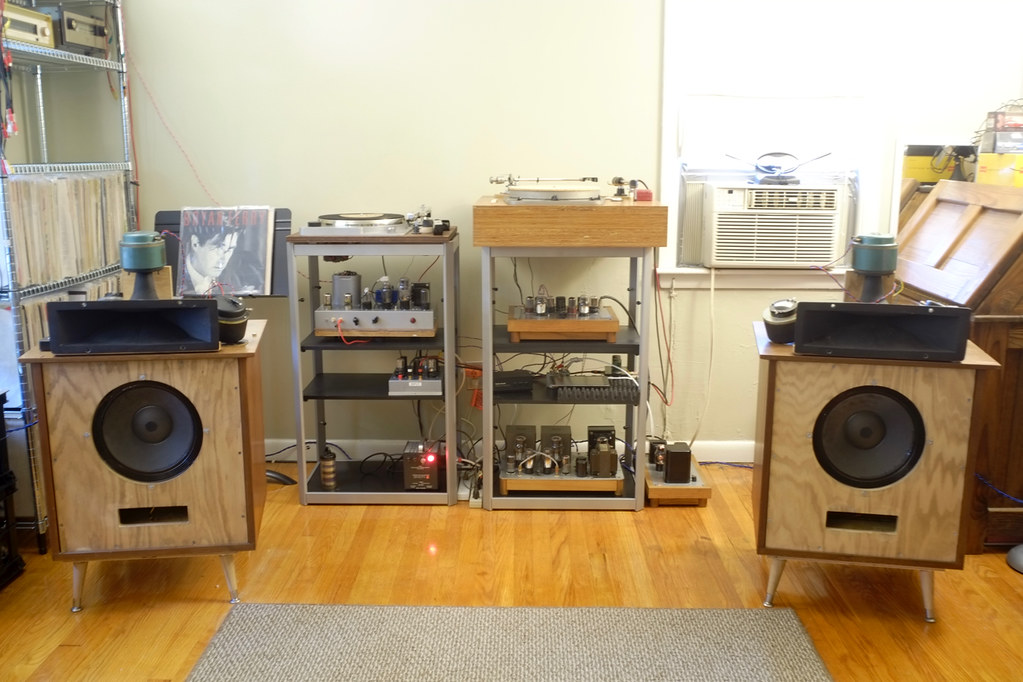'80s Nostalgia
Early to mid '90s
Mid-late 90s
Sound Practices 17 Homebrewer Article
2000-2008
Main Listening Room
Monaural Hi-Fi
Home Theatre with SET amps
The Attic 2008-2016
2017
2018
Man Cave 2020
 |
Monaural HiFi |
 |
Stereo |

 |
Monaural HiFi |
 |
Stereo |
 |
| 1kHz square wave from Stereophile Test CD3 Stock Magnavox CDB560 CD player |
Fortunately, I got a chance to sample a genuine single crown S1 graciously donated by Gary B. This select chip made my DAC sound a bit more transparent and cleaner, with a touch more detail and resolution. But I have to reaffirm that not having an S1 isn't a deal breaker. In fact, the darker and warmer sounding regular TDA1541s and TDA1541As can be a blessing in systems that are a bit hot in the top end.
 |
| 1 kHz square wave from Stereophile Test CD3 nosTDA1541tube DAC |
Not very relevant to this NOS DAC project, but AFAIK, the only difference between TDA1541A and the non-A is that the A can do 8x oversampling while the non-A is limited to 4x. But let's not go there anymore. Been there, done that...
Before I even became aware of NOS DACs, I had been using line transformers as digital sound processors. If you're worried about non-oversampled digital artifacts destroying the irreplaceable diaphragms of your Altec 3000 super tweeters, look for bandwidth limited military surplus transformers.
Many thanks to Gary Bronner and Pete Boser for their contributions to the JE Labs digital audio museum, as well as to the patrons of this blog!
 |
| Left = JE Labs clone (by John Piro) Right = J-Rob's Silbatone original |
 |
| Tango MCT999 MC transformer, JE Labs 5691 passive EQ RIAA phono + 76 > Tango NP216N line stage, JE Labs SE2A3 with Magnequest TFA204 OPTs (on the floor) |
 |
| Garrard 301 + Ikeda IT407 + SPU Meister Silver JE Labs SE300B deluxe mono blocks with Tamura F7002s on copper chassis |

Nate Grindheim aka Redboy in Audiokarma and HiFi Haven is an avid DIYer. You'll find his meticulously crafted MC step up transformers and amps in those aforementioned audio forums as well as in his Flickr stream.
Nate says:
"My buddy Gary (aka ejfud) built the cabinets for me. He knew I had the drivers and got tired of waiting around for me to build something for them, so he took the initiative to knock a pair together for me. He's a good friend to have around.
These things are really wonderful. They have that amazing Tone (with a capital "T"!) that I'm after, and the sound... it's just right, and good. They make music.
I am excited to get some proper amplification for them. There's a pair of 6L6 IPC amps here with Peerless iron that I think will be a great match, but I still need to overhaul them."
 |
| Garrard 401 + RMG309 + FR64S + SPU Aniversary, DIY preamp and SET amps |
If you want your DIY Silbatone cabinet project added to this exclusive club 😉, please leave a comment with your email address. I will reply to you directly.